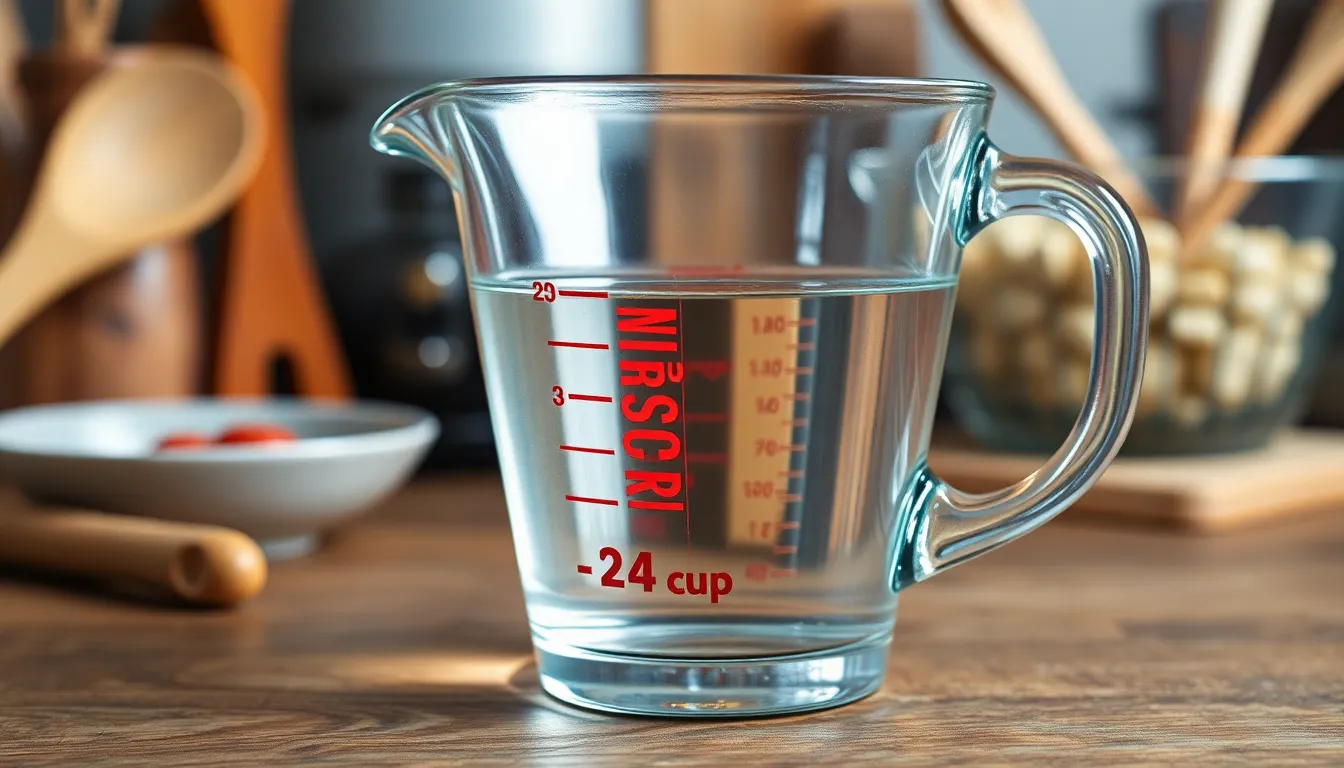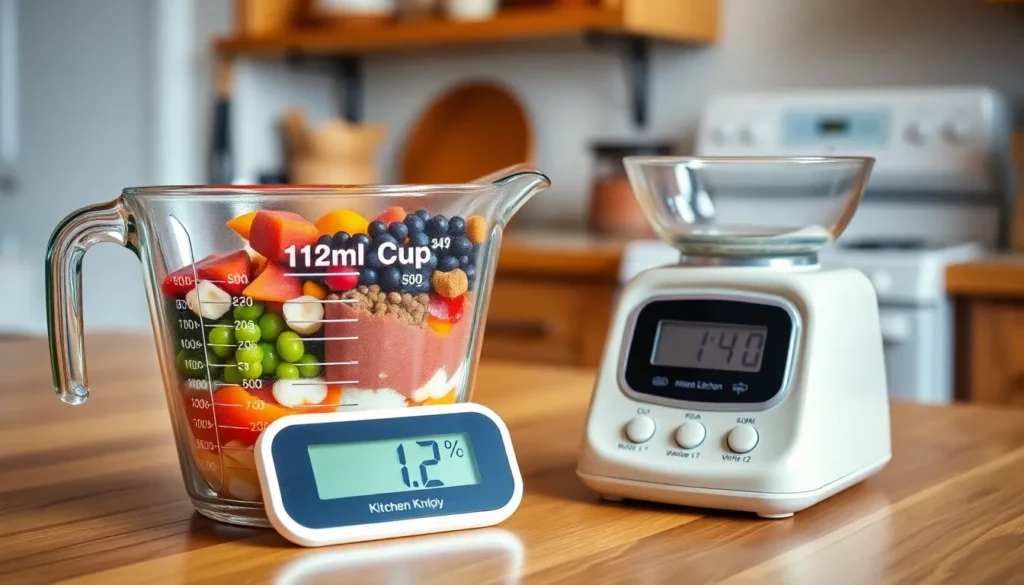Table of Contents
ToggleWhen it comes to cooking, precision is key. But let’s face it, converting measurements can feel like deciphering a secret code. Ever found yourself staring at a recipe that calls for 3/4 cup and wondered how many ounces that really is? You’re not alone.
Understanding Cup Measurements
Precision in cooking hinges on understanding cup measurements. Grasping the definition of a cup and its uses enhances cooking accuracy.
What Is a Cup?
A cup serves as a standard unit of volume in cooking. It equals 8 fluid ounces in the United States standard measurement system. Many recipes use cups for measuring both dry and liquid ingredients. The volume may vary in different countries; for instance, a metric cup measures 250 milliliters. Knowing this distinction ensures proper ingredient quantities in various cuisines.
How Cups Are Used in Cooking
Cups play a crucial role in recipe accuracy. They provide consistent measurements for ingredients like flour and water. Many baking recipes rely on precise quantities, as slight variations can alter the final product. Home cooks often use measuring cups to simplify these conversions. During meal preparation, cups help to quickly gauge portion sizes. Achieving desired results depends significantly on correct cup usage in recipes.
Converting 3/4 Cup to Ounces

Converting 3/4 cup to ounces provides clarity when following recipes. Knowing this conversion simplifies measuring both dry and liquid ingredients.
Standard Conversion Rate
3/4 cup equals 6 fluid ounces in the U.S. measurement system. This consistency allows cooks to rely on accurate conversions for successful dish preparation. Understanding these basic measurements aids with recipe precision, enhancing cooking experiences.
Examples of Conversion
In practical terms, different ingredients yield varying results when measuring. For instance, 3/4 cup of water converts to 6 ounces, while 3/4 cup of sugar also equals 6 ounces. Even though the volume remains unchanged, ingredient density can affect weight significantly. Transitioning between cups and ounces facilitates smoother preparation, ensuring that every recipe remains true to its intention.
Practical Applications of 3/4 Cup to Oz
Understanding the conversion of 3/4 cup to ounces plays a critical role in recipe accuracy and ingredient measurement. It translates to 6 fluid ounces, making it a common requirement in various cooking scenarios.
Recipes Using 3/4 Cup
Numerous recipes call for 3/4 cup as a standard measurement. Drinks like smoothies often require this volume for fruits or liquids. Desserts frequently use 3/4 cup of sugar or flour for consistency in texture and flavor. Casseroles and soups might integrate this measurement for stock or broth, ensuring rich taste. Knowing how to convert 3/4 cup to ounces simplifies recipe adjustments, allowing cooks to maintain the recipe’s integrity while tailoring portions.
Importance in Baking
Baking demands precise measurements, where 3/4 cup equating to 6 fluid ounces becomes vital. Little variations can alter the texture and taste of baked goods. This measurement supports consistent results in cakes and cookies, where ingredients like butter or sugar often require exactness. Recipes often specify 3/4 cup of dry ingredients to balance flavors and achieve ideal rises. Using ounces instead of cups can enhance clarity, especially when weighing ingredients for optimal results in baking.
Common Measurement Tools
Accurate measurement tools enhance cooking precision. Understanding these tools aids cooks in achieving desirable results.
Measuring Cups
Measuring cups serve as a staple in any kitchen. Most typically, they come in sets that include different sizes, such as 1 cup, 1/2 cup, and 1/4 cup. Standard U.S. measuring cups equal 8 fluid ounces per cup. They ensure consistency when preparing recipes, especially when converting 3/4 cup to 6 fluid ounces. Accurate measurement allows for greater reliability, particularly in baking where specifics matter. The design of measuring cups often features clear markings, enabling quick and easy readings. Many cooks prefer using liquid measuring cups for wet ingredients, which often include a spout for pouring. Choosing the right cup for the ingredient’s nature helps maintain the integrity of the recipe.
Digital Scales
Digital scales provide precision beyond traditional measurements. They enable cooks to switch between ounces and grams, catering to various recipes. Weighing ingredients directly eliminates discrepancies that sometimes occur with volume measurements. Many scales feature tare functions, allowing users to zero out the weight of containers. This makes for straightforward measuring without the added weight. For ingredients like flour, which can differ in density, using a scale yields better accuracy. Digital scales suit both amateur and professional cooks seeking exact ingredient quantities. Cooks who prioritize consistency often utilize these tools to ensure success in every dish.
Understanding the conversion of 3/4 cup to ounces is vital for anyone who enjoys cooking. By knowing it equals 6 fluid ounces in the U.S. measurement system, cooks can streamline their recipe preparations. This knowledge not only enhances accuracy but also ensures that dishes turn out as intended.
Using the right measurement tools like measuring cups and digital scales can further improve precision in the kitchen. These tools help eliminate guesswork and maintain consistency across various recipes. Embracing these practices ultimately leads to a more enjoyable and successful cooking experience.







